Forms play a crucial role in the proper functioning of any organization. They serve as a means to efficiently transmit important information between individuals or departments. One such form that can be extremely useful is a referral form template. These forms can be used to refer potential employees or business partners to your company, and they help to ensure that all relevant information is accurately conveyed.
Table of Contents
What Is A Referral Form?

A referral form is a document that is used to refer a candidate, employee or a business partner to a company. It typically includes information such as the referrer’s contact information, the referred person’s information, and relevant details about the referral, such as the position they are being referred for or the reason for the referral.
The referral form is usually filled out by the person making the referral and then submitted to the company for consideration. The purpose of the referral form is to streamline the referral process and ensure that all necessary information is provided for the company to make a decision.
Referral Form Templates
Streamline your referral process and capture valuable leads with our comprehensive collection of Referral Form Templates. These customizable and printable templates provide a user-friendly framework for capturing essential information about referred prospects or customers. Whether you’re running a referral program, seeking customer recommendations, or establishing partnerships with other businesses, our Referral Form Templates offer a structured approach to collect vital details such as contact information, referral source, and specific referral requirements.
By utilizing our templates, you can ensure consistent and organized referral submissions, track the effectiveness of your referral initiatives, and reward those who provide valuable referrals. Maximize the potential of word-of-mouth marketing and leverage the power of your network to grow your business. Download our Referral Form Templates now and unlock the benefits of a streamlined referral process.
Types of referral form
There are several types of referral forms, each with a specific purpose and set of information to be collected. Some common types of referral forms include:
Medical referral forms: Used by healthcare providers to refer patients to specialists for further treatment or diagnostic tests. These forms typically include patient information, symptoms and diagnosis, treatment history, and any relevant medical test results.
Employee referral forms: Used by companies to encourage current employees to refer qualified candidates for open positions. These forms typically include the name and contact information of the referring employee, as well as the name and qualifications of the candidate being referred.
Service referral forms: Used by service providers to refer clients to other providers for specific services. These forms typically include client information, the type of service being referred for, and the name and contact information of the referred provider.
Educational referral forms: Used by schools or educational institutions to refer students for special education services or other support programs. These forms typically include student information, academic performance, and any relevant test scores or evaluations.
Social referral forms: Used by social workers or other professionals to refer clients for social services such as housing, financial assistance, or counseling. These forms typically include client information, current living situation, and any relevant background information.
Legal referral forms: Used by lawyers or legal professionals to refer clients to other lawyers or legal experts for specialized legal services. These forms typically include client information, the type of legal matter being referred, and the name and contact information of the referred attorney or legal expert.
Insurance referral forms: Used by insurance providers or agents to refer clients to other insurance providers or agents for specific insurance products or services. These forms typically include client information, the type of insurance being referred for, and the name and contact information of the referred insurance provider or agent.
Mental health referral forms: Used by mental health professionals to refer clients to other mental health professionals for specialized treatment or therapy. These forms typically include client information, the type of mental health issue being referred for, and the name and contact information of the referred mental health professional.
Career referral forms: used by career counselors, coaches, or educational institutions to refer students or clients to career opportunities, internships, or job openings. These forms typically include student or client information, career interests, and the name and contact information of the referred opportunity.
It is also important to note that some referral forms may be electronic, and can be filled out and submitted online, while others may be paper-based and need to be printed, filled out and sent via mail or fax.
In general, referral forms should be clear, concise, and easy to fill out. They should also be designed to protect the privacy of the individuals involved.
How to Make a Referral Form
Start by identifying the purpose of the referral form. What information do you need to gather from the person making the referral, and what information do you need to provide to the person being referred?
- Create a basic layout for the form.This should include sections for the name and contact information of the person making the referral, as well as the name and contact information of the person being referred. You may also want to include sections for any additional information that may be relevant, such as the reason for the referral or any relevant medical history.
- Use a simple and easy-to-read font, such as Arial or Times New Roman, and make sure that the text is large enough to be easily read. Also make sure that there is enough white space between different sections of the form to make it easy to read.
- Make sure that the form is easy to fill out by using clear and concise language, and by providing clear instructions on how to complete each section. You may also want to include examples of what type of information should be provided in each section, to help guide people through the process.
- Once you have created the form, it is important to test it out to make sure that it is easy to understand and use. You can do this by having a few people fill out the form and providing feedback on what they found to be confusing or difficult.
- Based on feedback, make any necessary revisions to the form, and then print it out or prepare it for electronic distribution.
- Make sure that the referral form is easily accessible, whether it be in the office or online and make sure that it is user-friendly.
- It is also important to consider how you will use the information provided on the referral form. Make sure that you have a system in place for storing and reviewing the information, and that the information is protected from unauthorized access.
- When the referral form is complete, it is a good idea to have a process in place for following up with the person who made the referral, and for providing them with any relevant information about the person they referred.
- Keep in mind that referral forms are also useful for tracking the progress of the referral. It will help you to see how many people are being referred and how many are actually accepting the referral.
- Lastly, it’s important to review and update your referral form template on a regular basis to ensure that it continues to be effective and relevant.
How to Get Referrals – The Ultimate Guide
Start by identifying your target audience.
Who are the people most likely to refer others to your business? These may be existing customers, industry contacts, or other people in your network.
Create a referral program
Consider offering incentives, such as discounts or bonuses, for people who refer others to your business. This can be a great way to encourage people to spread the word about your company.
Make it easy for people to refer others to your business
Provide them with referral cards or flyers that they can share with others, or create a referral page on your website that makes it easy for people to share your information with others.
Leverage social media
Share information about your referral program on your social media accounts, and encourage your followers to share your posts with their own networks.
Ask for referrals directly
Don’t be afraid to ask your existing customers and contacts if they know anyone who could benefit from your products or services.
Provide excellent customer service
One of the best ways to get referrals is to provide excellent customer service. People are more likely to refer others to a business that they know provides a great experience.
Follow up with referrals
Make sure that you follow up with any referrals you receive to ensure that they are satisfied with their experience. This will help build trust and encourage them to refer others to your business.
Create a referral tracking system
This will help you to keep track of who is referring business to you and how many referrals you are getting.
Create valuable content
Create valuable content that is relevant to your target audience, this will help attract more visitors to your website and increase the chances of getting referrals.
Network, network, network!
Attend industry events and join relevant groups, this will help you to connect with potential referrers and build relationships with them.
Collaborate with other businesses
Partnering with other businesses that have a similar target audience can be a great way to get referrals.
Always be on the lookout for new opportunities
Keep your eyes open for opportunities to get referrals, whether it’s through networking events, industry groups, or social media.
Lastly, always make sure to show your appreciation to those who refer business to you.
Send a thank-you note, offer a small gift, or do something special to show them how much you value their referral.
Remember, getting referrals is an ongoing process and it takes time and patience. Building trust and relationships with potential referrers is key. By following these steps and making a referral program a priority in your marketing strategy, you’ll be able to increase the number of referrals you receive, which will help your business grow.
FAQs
What information should be included on a referral form?
The specific information that should be included on a referral form will depend on the type of business or organization, as well as the service or program being offered. However, a basic referral form will typically include fields for the name, contact information, and any relevant details about the person being referred.
Why is a referral form important?
A referral form is important because it helps businesses and organizations track and manage referrals. It also allows them to gather important information about the person being referred, which can be used to help ensure that they are matched with the appropriate service or program.
Can I use a referral form electronically or do I need to print it out?
Both options are possible, it depends on your preference and the type of business or organization. You can create an electronic version of the referral form that can be filled out and submitted online, or you can create a printable version that can be filled out by hand. Some businesses may choose to use both options, providing a printable version for in-person referrals and an electronic version for online referrals.
Can I customize a referral form template?
Yes, you can customize a referral form template to suit the specific needs of your business or organization. This may include adding or removing fields, customizing the layout and design, and adding specific instructions or branding elements. It’s also a good idea to review and update the referral form template on a regular basis to ensure that it continues to be effective and relevant.
How can I track the effectiveness of my referral program using the referral form?
You can track the effectiveness of your referral program using the referral form by keeping track of how many referrals are being made and how many are resulting in conversions (sales, appointments, etc.). You can also use the information collected on the referral form to analyze and segment your referral sources, and to track the performance of different incentives or promotions.






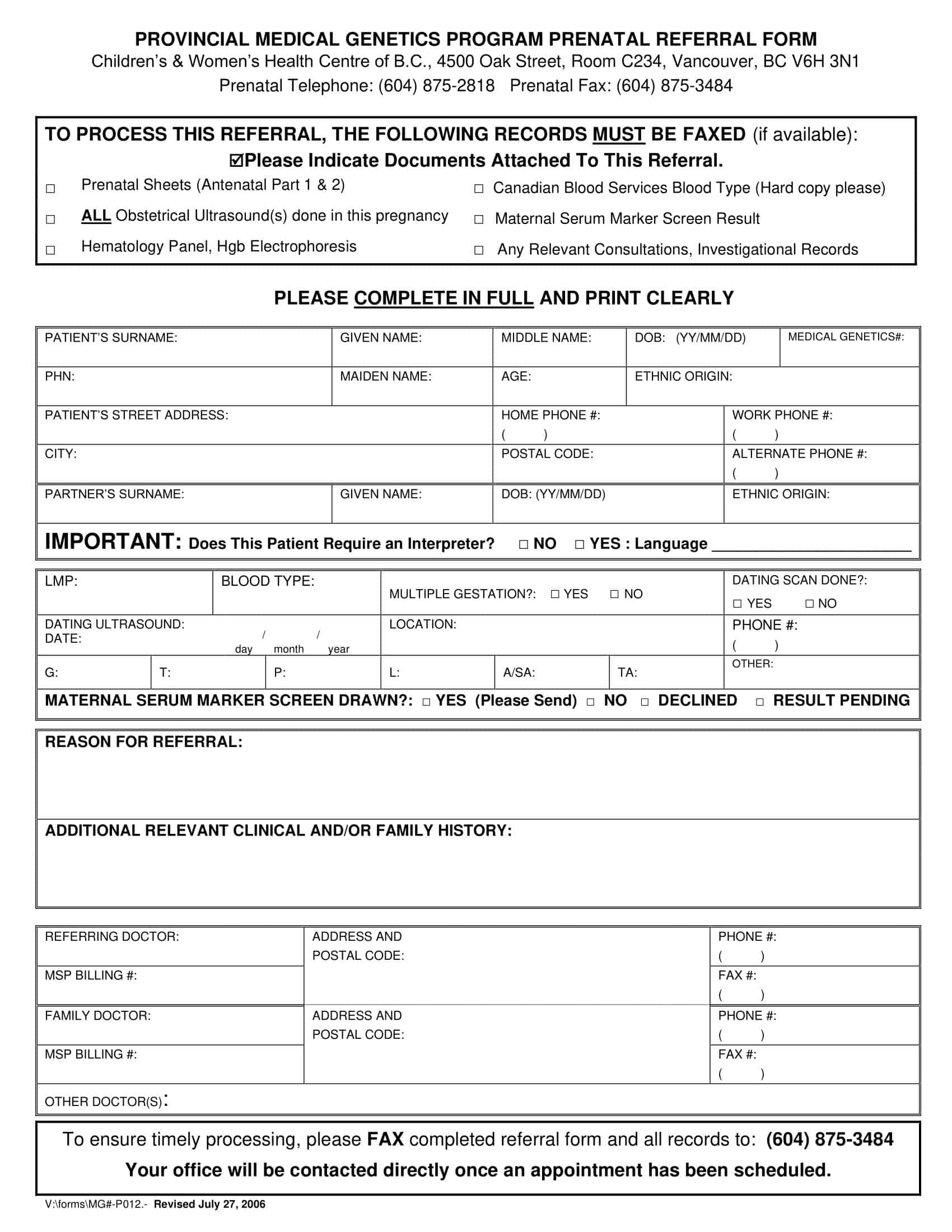

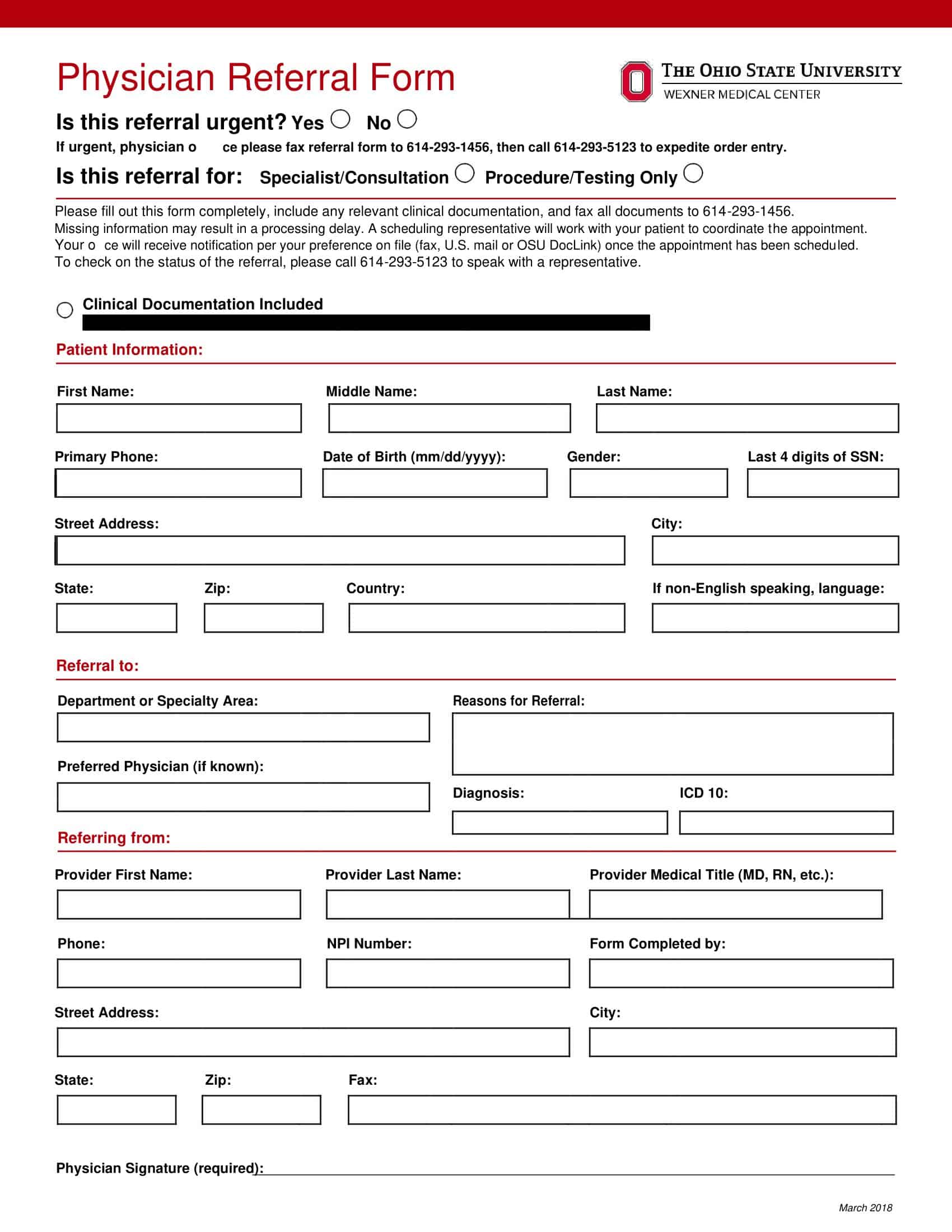
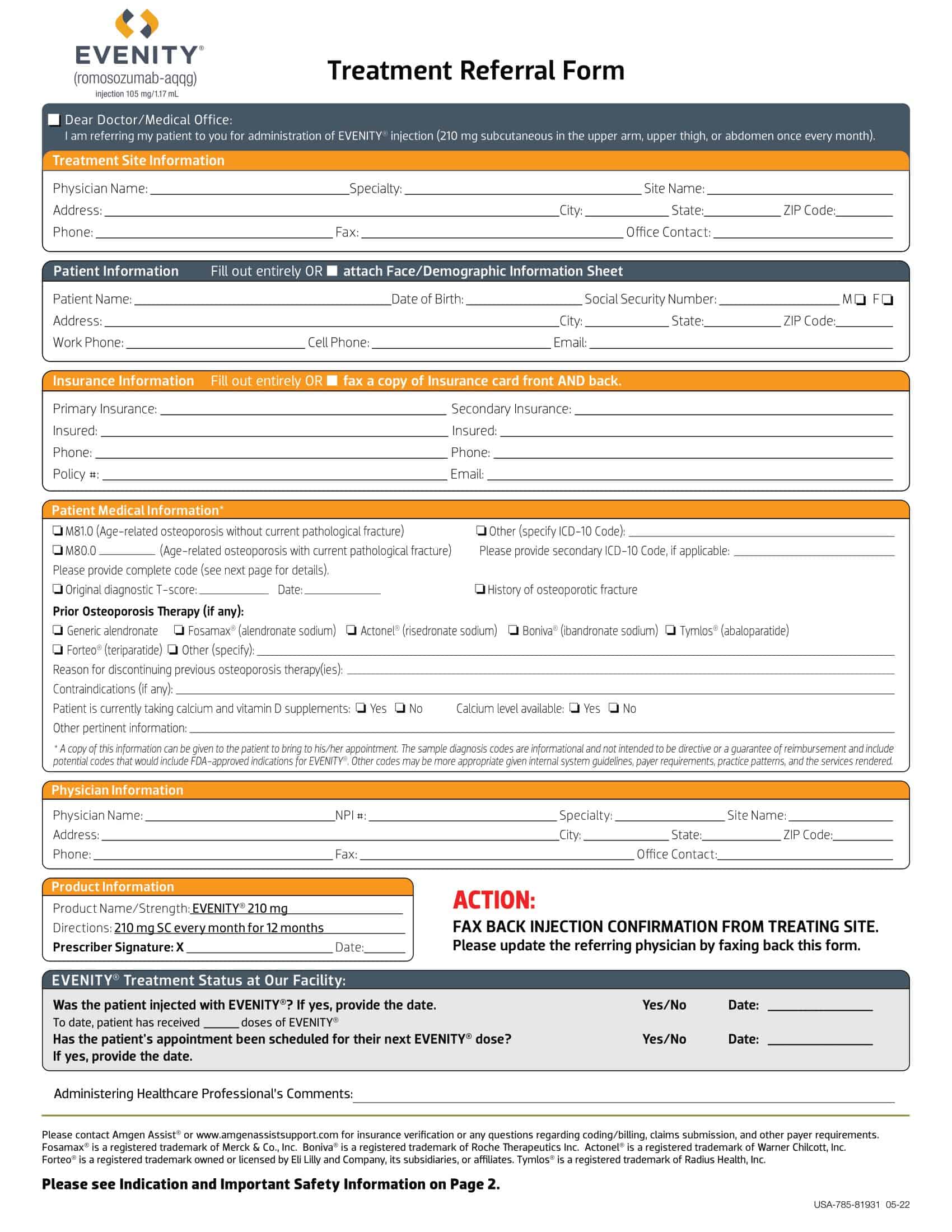
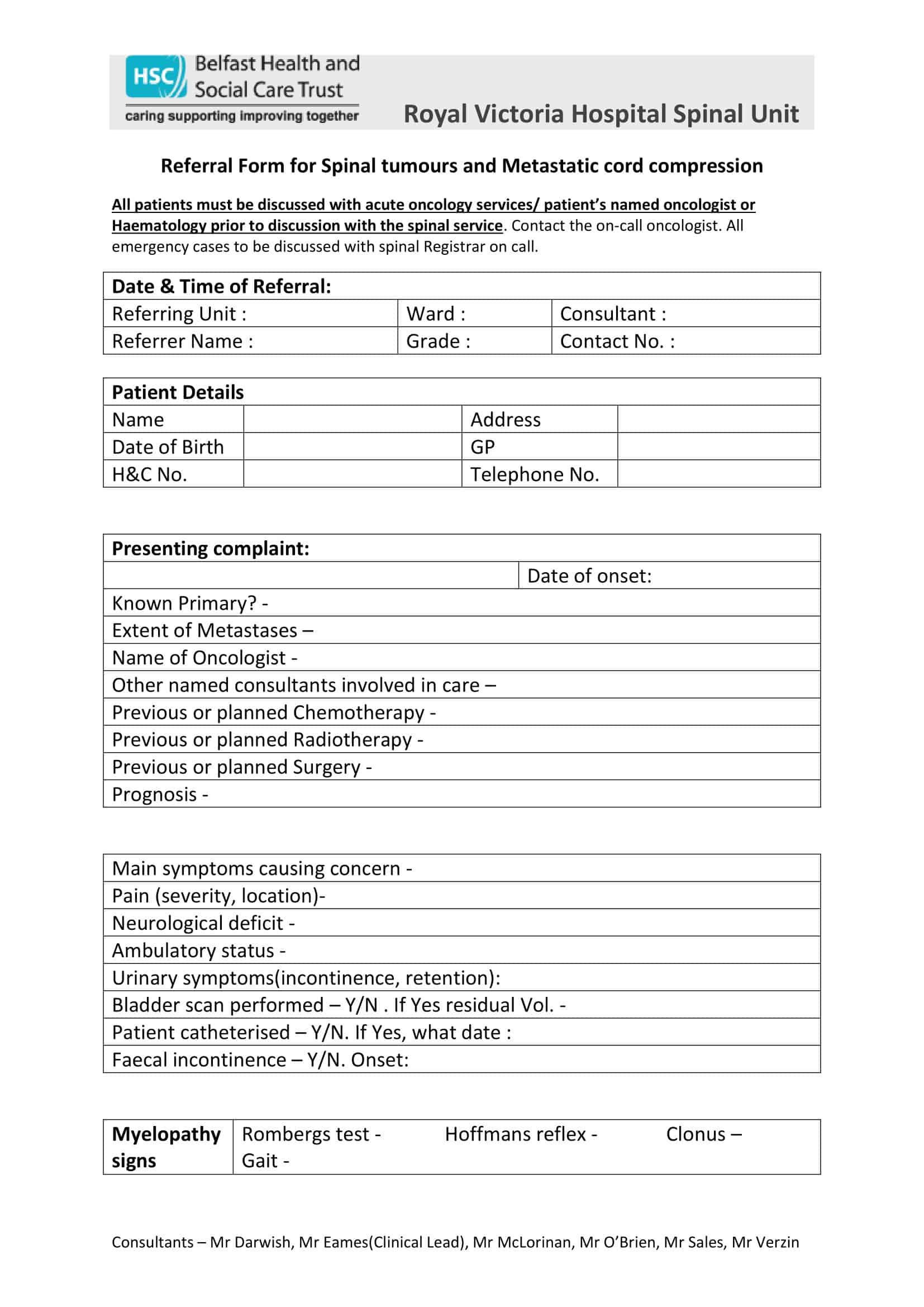

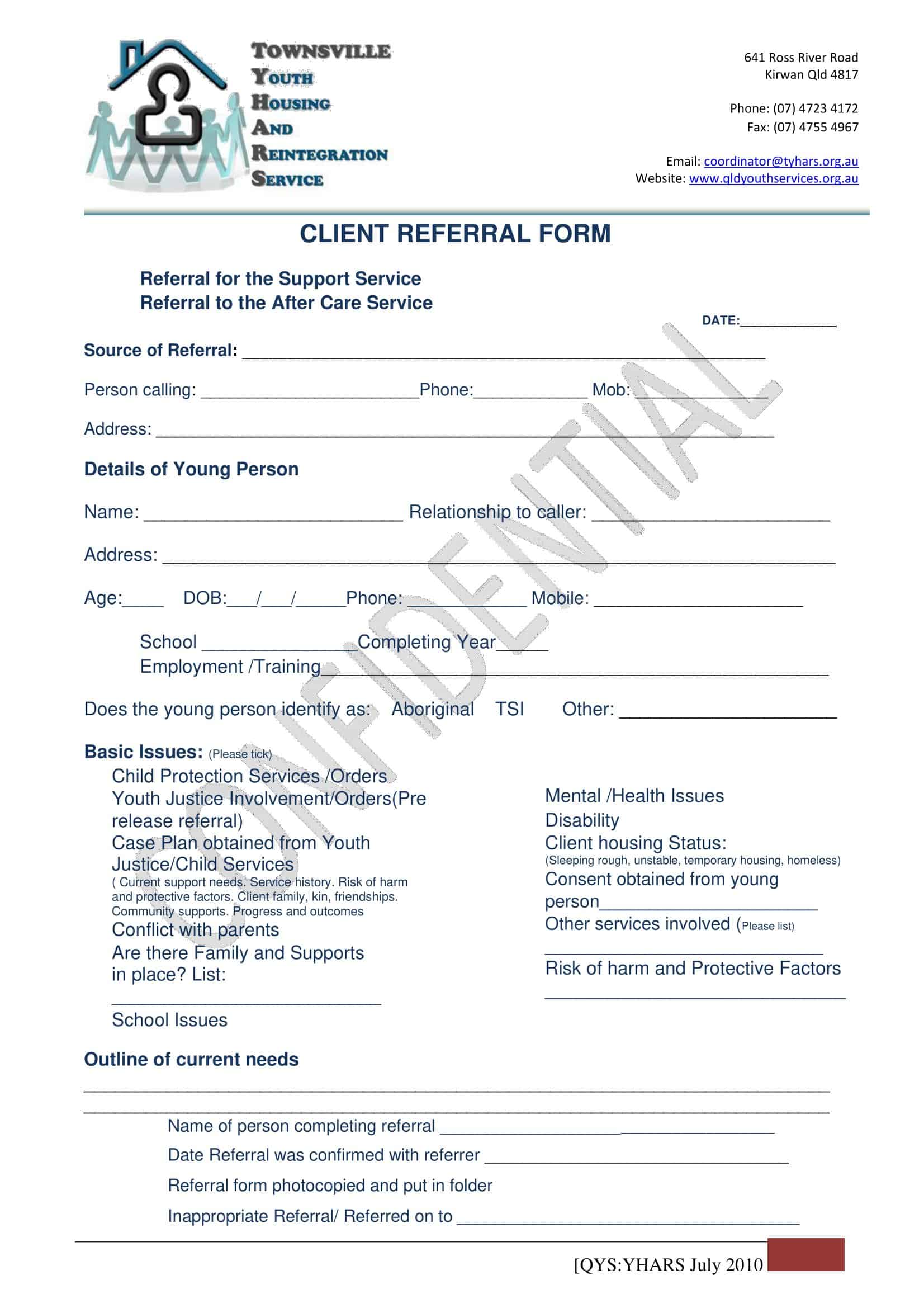

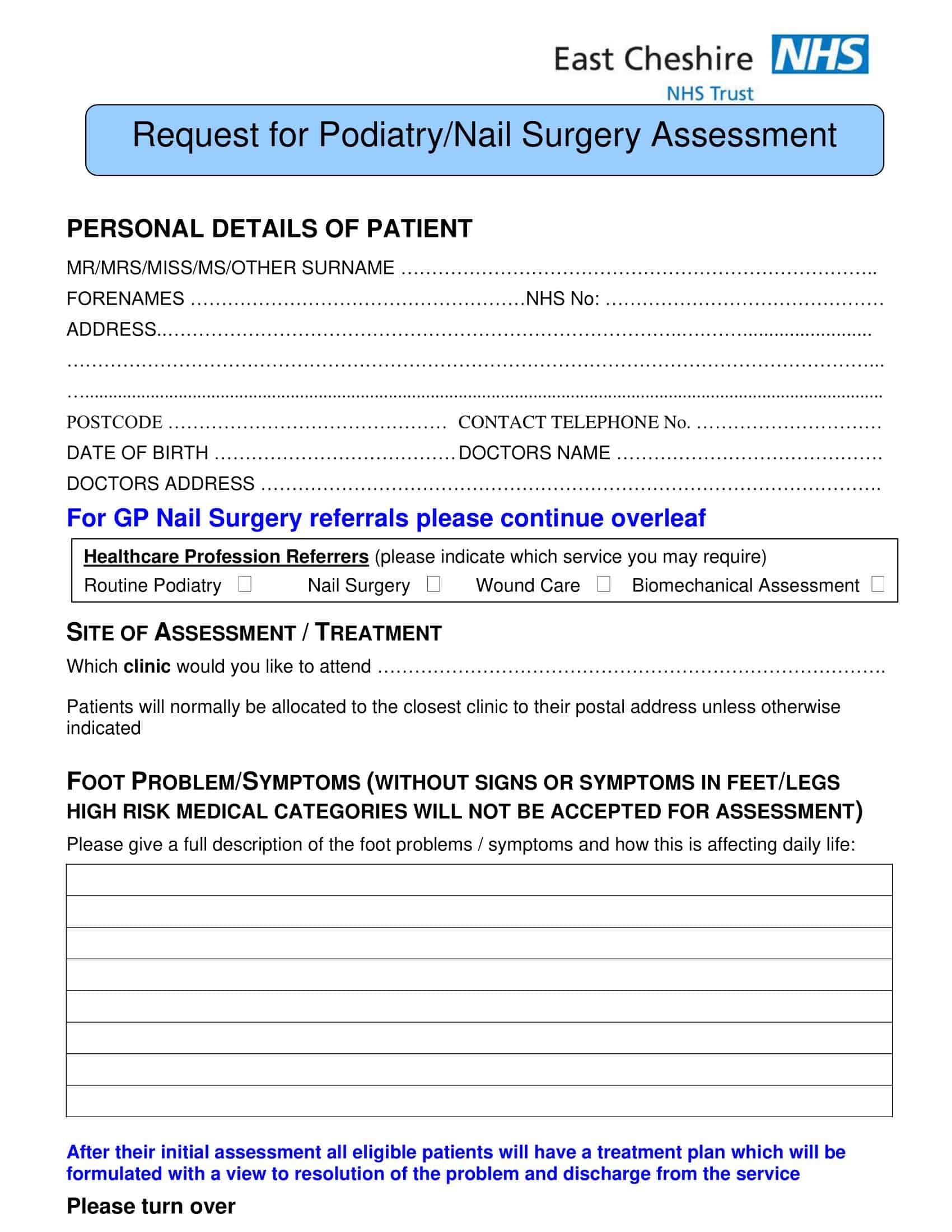
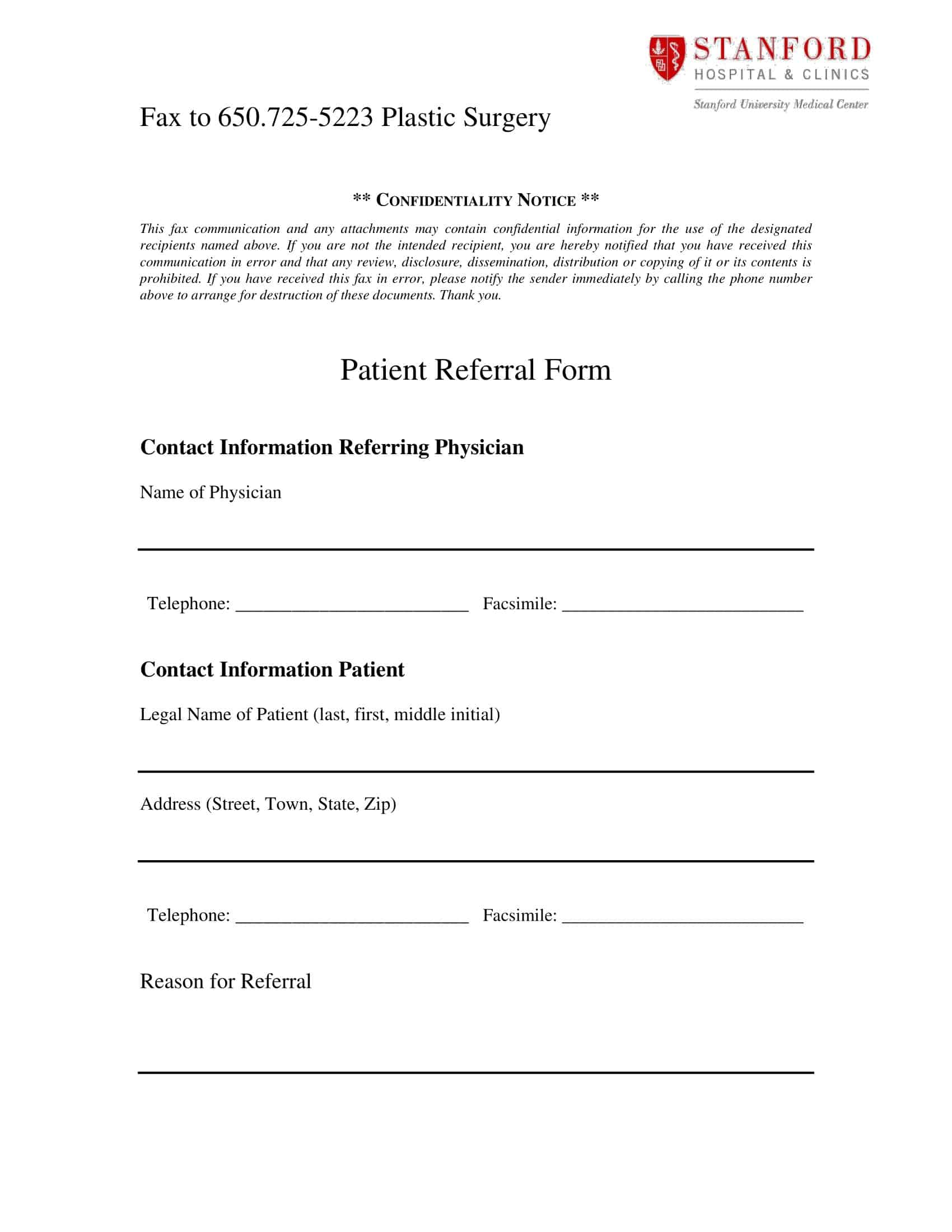


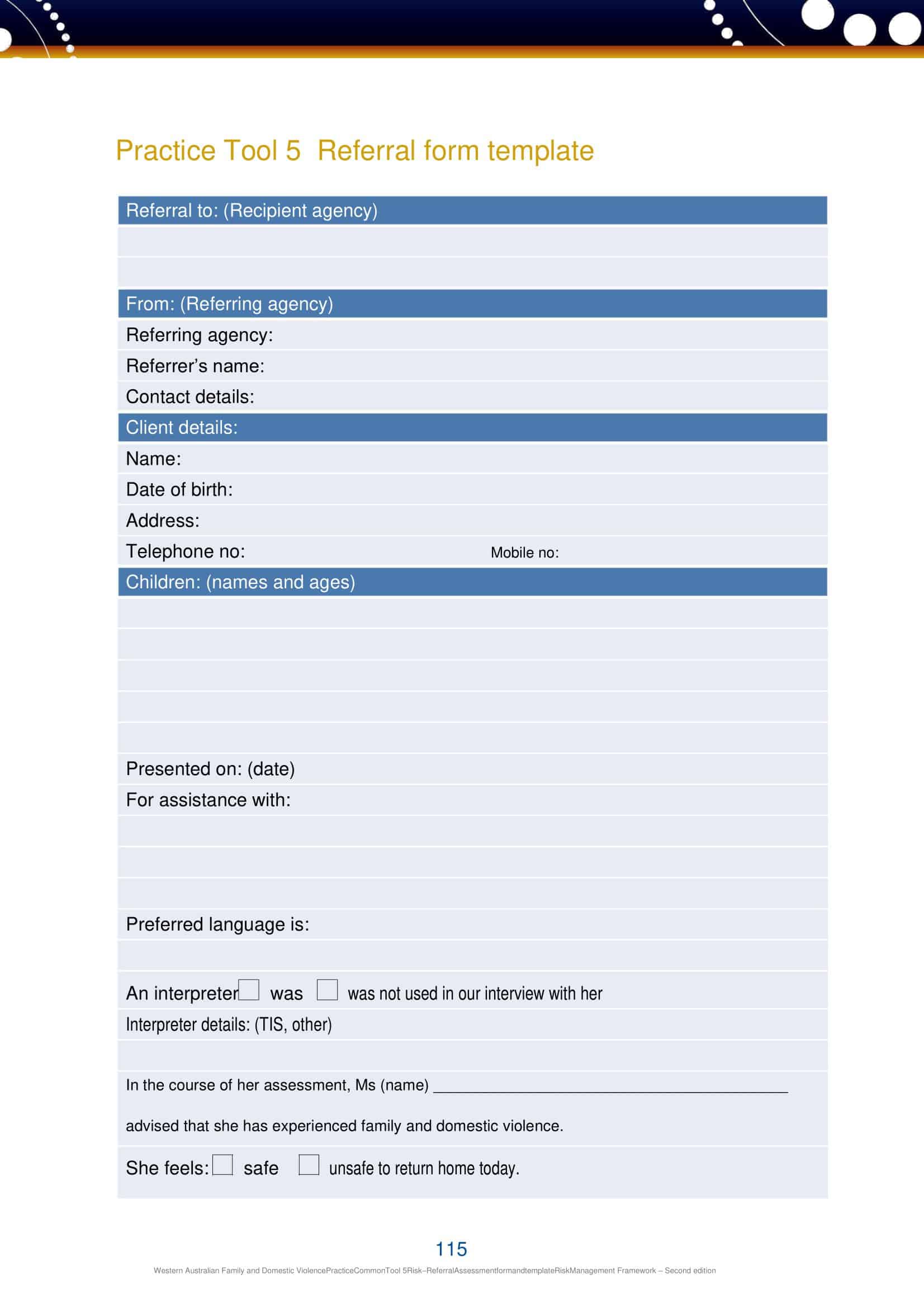


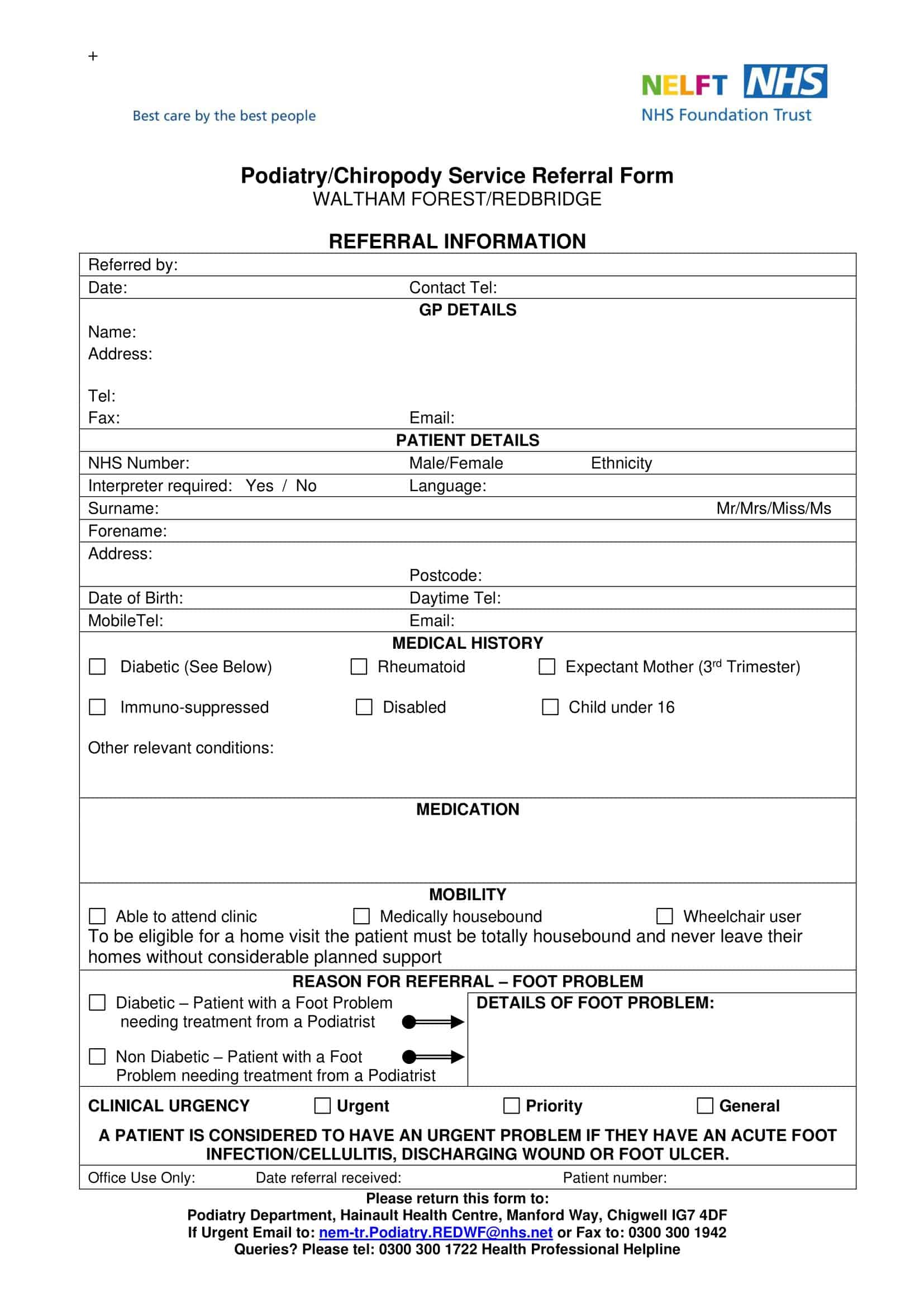
















































![Free Printable Roommate Agreement Templates [Word, PDF] 1 Roommate Agreement](https://www.typecalendar.com/wp-content/uploads/2023/06/Roommate-Agreement-150x150.jpg)
![Free Printable Credit Card Authorization Form Templates [PDF, Word, Excel] 2 Credit Card Authorization Form](https://www.typecalendar.com/wp-content/uploads/2023/06/Credit-Card-Authorization-Form-150x150.jpg)
![Free Printable Stock Ledger Templates [Excel,PDF, Word] 3 Stock Ledger](https://www.typecalendar.com/wp-content/uploads/2023/08/Stock-Ledger-150x150.jpg)
